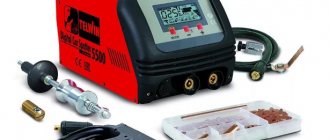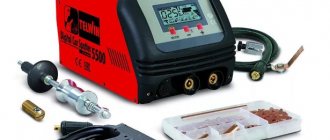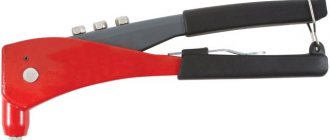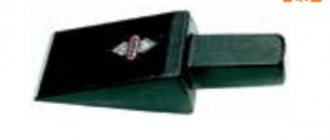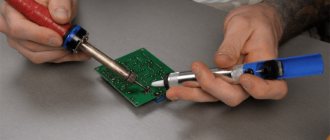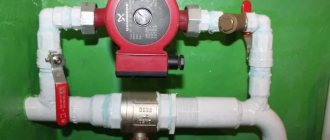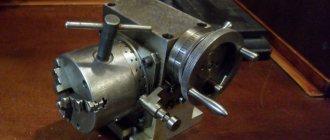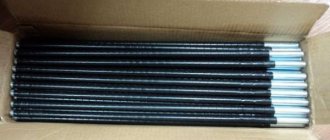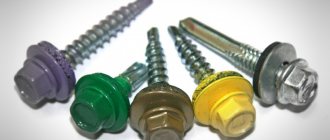Calipers
Calipers
This is a measuring tool that allows you to determine external and internal dimensions, as well as the depth of holes and ledges. It consists of a rod with a measuring scale and a movable frame with a vernier scale. Using a vernier can significantly improve measurement accuracy.
Due to their ease of use, calipers are the main measuring tool in production. They are most often used when carrying out turning, milling and metalworking work. The caliper is included in the kits for visual and measuring control of the VIC.
Technical conditions for calipers are regulated by GOST 166-89. The verification procedure is contained in GOST 8.113-85. A sample caliper verification protocol can be downloaded from the link. If necessary, a caliper can be issued
own metrological service. Detailed information about caliper verification is here.
Types of calipers:
- ШЦ-I. It has jaws for measuring external dimensions and jaws for measuring internal dimensions of parts. There is also a ruler for determining the depth of holes and ledges;
- ShTs-IC. The size is measured using a special arrow head mounted on a movable frame. This makes taking readings much easier;
- SCT-I. Designed for use in highly abrasive conditions. It has a one-sided arrangement of jaws coated with hard alloy;
- SHTs-II. It has a double-sided arrangement of jaws. Unlike ShTs-1, it allows marking, for which it is equipped with a frame feeding device;
- ШЦ-III. Differs in large sizes. With one-sided arrangement of jaws, without the ability to measure depth;
- SCC. Equipped with a digital scale.
Video on how to use a caliper.
Subscribe to our
YouTube
Vernier caliper design
Understanding the design features of this device is necessary in order to understand how to use it correctly. The caliper consists of the following parts.
- Fixed bar or ruler (bar). It represents the basis of the structure. There is a scale on it.
- A movable bar that can move along the bar. This bar has a vernier scale. It allows you to get very accurate measurements, namely, it counts fractions of a millimeter.
- Upper and lower lips. These are moving parts that allow you to measure an object and find out the dimensions both outside and inside. When the jaws are perfectly aligned, the zero marks on both scales should exactly match.
- Locking or clamping screw. It is required to fix the bar.
- Depth gauge. A thin retractable bar that can be used to measure depth. Electronic measuring devices are also equipped with batteries and a mobile mechanism.
In addition, there are models in the upper part of which there is a movable inch measuring scale. They are easy and convenient to use.
Vernier caliper type ШЦ-I
Caliper type ШЦ-1 with double-sided jaws and a special ruler, used for measuring internal and external surfaces as well as the depth of holes with a vernier reading of 0.02 mm. The ShTs-1 vernier caliper meets the requirements of GOST 166-89 and is included in the State Register of Measuring Instruments under No. 41093-09. mm. The methodology for checking calipers is regulated by GOST 8.113-85.
The measurement error on the main scale for calipers of the 1st accuracy class is 0.05 mm, for the 2nd class it is 0.1 mm. Measuring range from 0 to 300mm depending on the model. If necessary, a verification certificate can be issued.
The main technical characteristics are given in the table:
| Options | ШЦ1-125 | ШЦ1-150 | ШЦ1-200 | ШЦ1-250 | ШЦ1-300 |
| Ah, mm | 17,5 | 17,5 | 18,8 | 22,8 | 22,8 |
| V, mm | 40 | 40 | 50 | 60 | 65 |
| C, mm | 14,5 | 15,5 | 17 | 17 | 17 |
| Measuring range, mm | 0-125 | 0-150 | 0-200 | 0-250 | 0-300 |
| Vernier reading value, mm | 0,05 | 0,05 | 0,05 | 0,05 | 0,05 |
| Error, +-mm | 0,03 | 0,03 | 0,03 | 0,04 | 0,04 |
| Deviation from flatness and parallelism of the measuring surfaces of jaws for measuring external surfaces, mm | 0,004 | 0,004 | 0,004 | 0,004 | 0,004 |
| Deviation from parallelism of the measuring surfaces of jaws for measuring internal surfaces, mm | 0,04 | 0,04 | 0,04 | 0,04 | 0,04 |
| Distance between jaws for measuring internal surfaces, mm | 10 +0,04 | 10 +0,04 | 10 +0,04 | 10 +0,05 | 10 +0,05 |
| Error when measuring depth, mm | 0,05 | 0,05 | 0,05 | 0,05 | 0,05 |
| Number of pieces per package | 50 | 50 | 50 | 20 | 20 |
| Package weight, kg | 14 | 15 | 18 | 14 | 15 |
| Packaging dimensions, cm | 47x23x23 | 47x26x23 | 57x32x25 | 43x23x25 | 44x28x30 |
What you should know about calipers
The caliper requires careful handling because other factors may even reduce its accuracy and
measure the measurement results:
- Damage to the working surface - even a small scratch or failure can be decisive.
- Wear of the jaws, or lack of strict parallelism between the jaws.
- Accumulated dirt or dust between the moving elements of the boom.
- Zero readings are not set correctly.
The instrument should be stored in a case, which must be included in the kit.
Vernier caliper type ШЦ-II
Calipers of type ShTs-2, just like ShTs-1, have jaws for measuring the external and internal dimensions of parts, as well as a ruler for determining depth. A special feature of ShTs-II is the ability to mark parts using a precision frame feed device.
General requirements for ShTs-2 calipers are contained in GOST 166-89. ShTs2 is included in the State Register of Measuring Instruments under No. 41094-09, the measurement range varies from 0 to 500 mm depending on the model. If necessary, a verification certificate can be issued for the instrument.
The main technical characteristics of ShTs-II are given in the table:
| Options | ШЦ-II 0-160 | ШЦ-II 0-250 | ШЦ-II 0-320 | ШЦ-II 0-400 | ШЦ-II 0-500 |
| Ah, mm | 60 | 60 | 60 | 100 | 100 |
| V, mm | 10 | 10 | 10 | 10 | 10 |
| C, mm | 10 | 10 | 10 | 12 | 12 |
| H, mm | 36,5 | 36,5 | 36,5 | 55 | 55 |
| Measuring range, mm | 0-160 | 0-250 | 0-320 | 0-400 | 0-500 |
| Vernier reading value, mm | 0,05/0,1 | 0.05/0,02/0,1 | 0,05/0,1 | 0,05/0,1 | 0,05/0,1 |
| Error at maximum length, +- mm. | 0,05 | 0,05 | 0,05 | 0,05 | 0,1 |
| Deviation from flatness and parallelism of the measuring surfaces of jaws for measuring external surfaces, mm | 0,007 | 0,007 | 0,007 | 0,010 | 0,010 |
| Deviation from parallelism of the measuring surfaces of jaws for measuring internal surfaces, mm | 0,02 | 0,02 | 0,02 | 0,02 | 0,02 |
| Distance between jaws for measuring internal surfaces, mm | 10 +0,03 | 10 +0,03 | 10 +0,03 | 10 +0,03 | 10 +0,03 |
| Error when measuring depth, mm | 0,05 | 0,05 | 0,05 | 0,05 | 0,05 |
Reading results
It is not difficult to read the results obtained using a caliper. On the fixed frame (bar), where the main scale is located, determine the integer number (mm). The vernier scale shows hundredths of a millimeter. You need to find the line of the vernier scale on the caliper you are using that matches a certain number on the main scale. This indicator will be the value of the part size in millimeters.
Vernier scale
It happens that when measuring, a whole indicator is sufficient. If you want to set the value more accurately, you need to inspect the vernier scale. And on it you need to find the point of coincidence of the two marks. The number on the vernier scale will indicate the tenth value. By adding it to an integer, the user will receive the exact size of the part.
Reading the result by vernier
By hourly indicator
When using a dial caliper, the whole number in millimeters can also be seen on the main scale. As on an analog device, it is determined by the coincidence of marks on both scales. The number presented on the dial shows a value from 0.01 to 0.99 mm, this depends on the value of the scale division. A pointer or dial caliper is a more accurate device than a mechanical (analog) one. It should be used when it is necessary to obtain perfectly accurate data.
Reading results on a pointer caliper
By digital display
High-precision (up to hundredths of millimeters) readings of the results obtained when working with a digital caliper are presented on the liquid crystal display of the scoreboard. It is necessary to remember that it has different modes that show measurement results in both millimeters and inches. Such devices are also equipped with a vernier scale. It can be used if, for example, the battery runs out.
Vernier caliper type ШЦ-III
ШЦ-3 is a one-sided caliper with the ability to mark parts and determine internal and external dimensions. The ShTs-3 vernier caliper meets the requirements of GOST 166-89 and is included in the State Register of Measuring Instruments under No. 41094-09. Measuring range from 0 to 2000 mm depending on the model. A certificate of verification can be issued upon request.
The main technical characteristics of ShTs-3 are given in the table:
| Options | ШЦ-III-250 | ШЦ-III-400 | ШЦ-III-500 | ШЦ-III-630 | ШЦ-III-800 | ШЦ-III-1000 | ШЦ-III-1600 | ШЦ-III-2000 |
| A mm. | 60 | 100 | 100 | 100 | 100 | 100 | 125 | 150 |
| B mm. | 10 | 10 | 10 | 10 | 20 | 20 | 20 | 20 |
| C mm. | 10 | 12 | 12 | 12 | 18 | 18 | 18 | 20 |
| Measuring range, mm. | 0-250 | 0-400 | 0-500 | 250-630 | 250-800 | 320-1000 | 500-1600 | 800-2000 |
| Vernier reading value, mm. | 0,05 | 0,05 | 0,05 | 0,05 | 0,05 | 0,05 | 0,05 | 0,05 |
| Error, +_ mm. | 0,04 | 0,04 | 0,05 | 0,05 | 0,06 | 0,07 | 0,1 | 0,1 |
| Deviation from flatness and parallelism of the measuring surfaces of jaws for measuring external surfaces, mm. | 0,004 | 0,004 | 0,004 | 0,004 | 0,004 | 0,004 | 0,004 | 0,004 |
| Deviation from parallelism of the measuring surfaces of jaws for measuring internal surfaces, mm. | 0.02 | 0.02 | 0.02 | 0.02 | 0.02 | 0.02 | 0.02 | 0.02 |
| Distance between jaws for measuring internal surfaces, mm. | 10 +0.02 | 10 +0,02 | 10 +0,02 | 10 +0,02 | 20 +0,03 | 20 +0,03 | 20 +0,03 | 20 +0,03 |
| Quantity, pcs. packaged | 30 | 10 | 10 | 10 | 5 | 5 | 5 | 2 |
| Package weight, kg. | 22 | 16 | 17 | 19 | 21 | 24 | 30 | 32 |
| Packaging dimensions, see | 48x42x29 | 72x44x17 | 71x44x16 | 83x44x17 | 131x29x21 | 131x29x21 | 193x24x18 | 245x34x11245 x34x11 |
The procedure for carrying out measurements, checking serviceability
Before work, check the technical condition of the caliper and, if necessary, adjust it. If the device has warped jaws, it cannot be used. Nicks, corrosion and scratches on working surfaces are also not allowed. It is necessary that the ends of the rod and the depth gauge ruler coincide when the jaws are aligned. The instrument scale must be clean and easily readable.
- The caliper jaws are pressed tightly against the part with little force, without gaps or distortions.
- When determining the outer diameter of a cylinder (shaft, bolt, etc.), make sure that the plane of the frame is perpendicular to its axis.
- When measuring cylindrical holes, the jaws of the caliper are placed at diametrically opposite points, which can be found by focusing on the maximum scale readings. In this case, the plane of the frame must pass through the axis of the hole, i.e. Measurement along the chord or at an angle to the axis is not allowed.
- To measure the depth of a hole, a rod is placed at its edge perpendicular to the surface of the part. The depth gauge ruler is pushed all the way to the bottom using a movable frame.
- The resulting size is fixed with a locking screw and the readings are determined.
When working with a caliper, monitor the smooth movement of the frame. It should sit tightly on the bar without swaying, while moving without jerking with moderate force, which is regulated by the locking screw. It is necessary that when the jaws are aligned, the zero stroke of the vernier coincides with the zero stroke of the rod. Otherwise, reinstallation of the vernier is required, for which the screws securing it to the frame are loosened, the strokes are aligned and the screws are re-fastened.
Source: tehnouzel.ru
Vernier ( Venier scale, vernier ) is an auxiliary scale installed on various measuring instruments and instruments, which serves to more accurately determine the number of divisions.
The principle of operation of the scale is based on the fact that the eye notices the coincidence of divisions much more accurately than it determines the relative location of one division between others. Verniers are used in measuring instruments in which, when measuring length or angle, parts of the device move relative to each other, for example, two legs of a caliper.
On one of these parts there is a scale of the main scale, on the other there is a vernier, which is a small scale that moves when measured along the main scale. If the lower scale has a length of 9 mm and is divided into 10 segments, then the price of the vernier division will be equal to 0.9 mm. If the zero segments of both scales coincide, the first stroke of the vernier will be shifted relative to the first stroke of the main scale by 0.1 mm, the second stroke of the vernier will be shifted relative to the second stroke of the upper scale by 0.2 mm, etc. (Fig. 1).
Fig.1 Measuring scale with vernier
If you move the lower scale to the right by 0.1 mm, then the first stroke of the vernier will coincide with the 1st stroke of the upper scale, if you move the lower scale by 0.2 mm, then the second strokes of the upper and lower scales will coincide, etc. Thus, the serial number of the vernier stroke, which coincides with the stroke of the upper scale, shows how many tenths of a mm the lower scale is shifted relative to the millimeter stroke of the upper scale (not necessarily zero).
Fig.2 Measurements using the Vernius scale
The reading on the vernier scale is carried out as follows. The main scale reading closest to the left to vernier zero indicates the integer mm (Fig. 2). The serial number of the stroke on the Vernier scale, coinciding with the stroke of the upper scale, indicates the number of tenths of mm. Thus, the readings in Fig. 2 correspond to 21.3 mm.
Electronic calipers type ШЦЦ-I
Electronic calipers are used to determine external and internal dimensions, as well as the depth of holes and ledges. This type of caliper has a digital readout scale that allows you to quickly take readings, reducing the chance of subjective error. The scale is based on a liquid crystal indicator.
In addition to traditional use in production, electronic calipers are often used in metrology services and quality control departments. ШЦЦ-1 meets the requirements of GOST 166-89 and is included in the State Register of Measuring Instruments under No. 41093-09. The tool measurement range is from 0 to 300mm depending on the model. If necessary, a verification certificate can be issued.
The main characteristics of electronic booms are shown in the table:
| Options | ШЦЦI-125 | ШЦЦI-150 | ShTsKI-150 | ШЦЦI-200 | ШЦЦI-250 | ШЦЦI-300 |
| A, mm | 16,5 | 16,5 | 17,5 | 20 | 20,5 | 20,5 |
| B, mm | 40 | 40 | 40 | 50 | 60 | 60 |
| C, mm | 16 | 16 | 15,5 | 16 | 17 | 17 |
| Measuring range, mm | 0-125 | 0-150 | 0-150 | 0-200 | 0-250 | 0-300 |
| Reading value, mm | 0,01 | 0,01 | 0,01 | 0,01 | 0,01 | 0,01 |
| Error, +-mm | 0,03 | 0,03 | 0,03 | 0,03 | 0,04 | 0,04 |
| Deviation from flatness and parallelism of the measuring surfaces of jaws for measuring external surfaces, mm | 0,004 | 0,004 | 0,004 | 0,004 | 0,004 | 0,004 |
| Deviation from parallelism of the measuring surfaces of jaws for measuring internal surfaces, mm | 0,04 | 0,04 | 0,04 | 0,04 | 0,04 | 0,041 +0,02 |
| Distance between jaws for measuring internal surfaces, mm | 10 +0,02 | 10 +0,02 | 10 +0,02 | 10 +0,02 | 10 +0,03 | 10 +0,03 |
| Error when measuring depth, mm | 0,05 | 0,05 | 0,05 | 0,05 | 0,05 | 0,05 |
| Quantity, pcs. packaged | 40 | 50 | 50 | 40 | 30 | 25 |
| Package weight, kg | 14 | 18 | 18 | 17 | 18 | 17 |
| Packaging dimensions, cm | 50x27x30 | 50x27x33 | 51x27x30 | 60x34x30 | 45x42x35 | 45x42x35 |
How to choose a good tool
The main advantages of a caliper are the accuracy of measurements. For this reason, a high-quality tool must be made of durable material, have easily visible markings and withstand heavy use. Stainless steel tools with engraved markings are popular among experienced craftsmen due to their high resistance to durability and corrosion.
The main principles of choice will be the following:
- Length - it will determine the measurement range. It should be selected depending on the tasks. For everyday use, a tool measuring 12.5 cm will be sufficient, but for building a house, for example, you will need a boom 5 meters long.
- Measurement step - roughly speaking, the measurement result will be much more accurate for those models that have the smallest distance between adjacent scale divisions.
- Price – you shouldn’t buy an expensive model for occasional home use, but a good caliper won’t come cheap. Craftsmen for whom this instrument is the main one for measurements should look towards proven German, Japanese and Swiss models. High-quality tools, especially electronic ones, are very expensive, and it is enough to buy them once, because they will last a lifetime. The frequency of use should be based on the price of the tool.
Before purchasing a bar, make sure that there are no gaps between the fixed and moving parts, and that the zero marks of both scales match when the jaws are closed.
How to use a caliper correctly
Before using the tool, you must check it for serviceability and accuracy. To do this, you need to inspect it and remove any existing dirt from all parts. It is also necessary to check whether the zero marks on the main scale and the vernier scale coincide when the lower jaws are tightly connected.
It is best to fix the part being measured in a stationary state, but you can also hold it in your left hand, the main thing is to prevent it from moving during the measurement process. If you need to measure the external dimensions of any part, you need to spread the jaws and tightly cover the object being measured with them. In this case, the part must be in the correct position, without distortion and should not move. The next step is to fix the part in the caliper by screwing in the mounting screw, without excessive force. Only after this can you start reading the readings.
Purpose of a caliper
This measuring tool is used mainly to obtain the most accurate data when determining the outer and inner diameters of pipes, the thickness of their walls, to calculate the center distance in holes, the dimensions of cylindrical parts, the thickness of wire and metal sheet, as well as other small-sized materials and small products.
With such a device it is convenient to measure the depth of grooves, holes and grooves, various recesses with great accuracy in the most inaccessible places. The accuracy of a caliper in measurements reaches tenths and hundredths of a millimeter, which cannot be achieved by such a simple tool as a ruler or tape measure.
Vernier caliper device
The main elements of the tool with names are already shown above, but let's take a closer look. This video successfully shows various models and examples of working with them, and also explains what a caliper consists of.
Mechanical models
They differ in that all measurements are made by manually moving the elements and visually determining the readings using the measuring markings.
Depending on the design of the product, the scale may have different lengths (see table above) and, accordingly, the permissible measurement range. These numbers don't match. So, if the length of the marking of the tool rod is 14.5 cm (the digital designations may not be completely marked, as can be seen in the photo), then it can be used to measure a part or hole with a width/diameter/depth of up to 13...13.3 cm.
The accuracy of measurements is determined by the marking of the vernier - up to tenths or hundredths of a millimeter. The same number is indicated on the device itself in the form of a marking like this.
Each manufacturer, especially foreign ones, can give their own markings, so when purchasing a product it is better to check with the seller exactly where this marking is affixed and what it means.
When working with products manufactured in countries where the inch measurement system (English) is adopted, a caliper with an inch vernier marking in addition to the millimeter one may be more convenient.
Please note: in this case, there are inch markings not only on the vernier, but also on the rod, and the measurement accuracy is indicated separately for both measurement systems.
Electronic (digital) calipers
In these devices, moving the jaws along the rod is also done manually, but the alignment of the scales and the issuance of measurements is carried out automatically, by tracking the movement of the vernier along magnetic marks.
The accuracy of measurements depends on the frequency of mark placement and tracking accuracy.
This is what the “inside” of a digital caliper might look like.
(Bottom photo shown at high magnification)
This is what the main part of the electronic device looks like up close.
Here, too, as you can see, there is a switch from the metric to the inch measurement system.
It is worth noting that when working with such a model, it is more convenient to look at the readings on the display; it is more difficult to properly track the position of the slider relative to the bar markings than in a mechanical device.
Marking calipers
They should be separated into a separate group, since with the help of this tool you can not only measure the required element of the product, but also transfer the size to another part. Their feature is the rigid fixation of the tool elements relative to each other after taking measurements - only in this case can the part be marked with the required accuracy.
This photo shows the model SHTSRTI 200 - 0.1 with needles. Let us recall that the letter “T” in the marking means the manufacture of sponges or, in this case, needles, from hard alloy.
Model ShTsKT-I-150 – 0.02 with a circular vernier, used mainly for measurements, but also for marking.
Model ShTsR 150 – 0.1 with a circular sponge breeding system.
Digital instrument ShTsTsRT 300 – 0.01 with circular jaw opening and accuracy up to hundredths of a millimeter.
Electronic caliper
This is a digital caliper in which you don’t need to count fractions of a millimeter; all the necessary information will be reflected on the display.
The only thing you have to do is add up the whole millimeters that the line shows on the frame with those fractions of millimeters that the scoreboard shows
Remember that electronic instruments only show information that could be measured on a vernier scale in mechanical samples. Dimensions equal to or greater than a millimeter are shown on the frame.
What is a caliper and what is it used for?
A caliper helps determine the exact dimensions of a part, its diameter, thickness, depth of recesses or holes, and the distance between elements. Using this tool, products are rejected at enterprises. In addition, it is used to monitor the wear of parts.
Interesting fact! Some models of the device allow you to apply markings to the surfaces of workpieces.
The tool will be useful to any craftsman who is more or less familiar with carpentry. It will help you measure the diameter of a drill or nut, the distance between the edges of a part, and determine the width of a hole in a wall or board with an accuracy of a fraction of a millimeter. Usually it is carefully stored in special cases to prevent dust from moving elements.
The device allows you to take measurements with an accuracy of 0.01 mm. There are both electronic and mechanical models
The purpose of the caliper also determines the design of its design.
